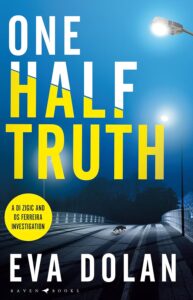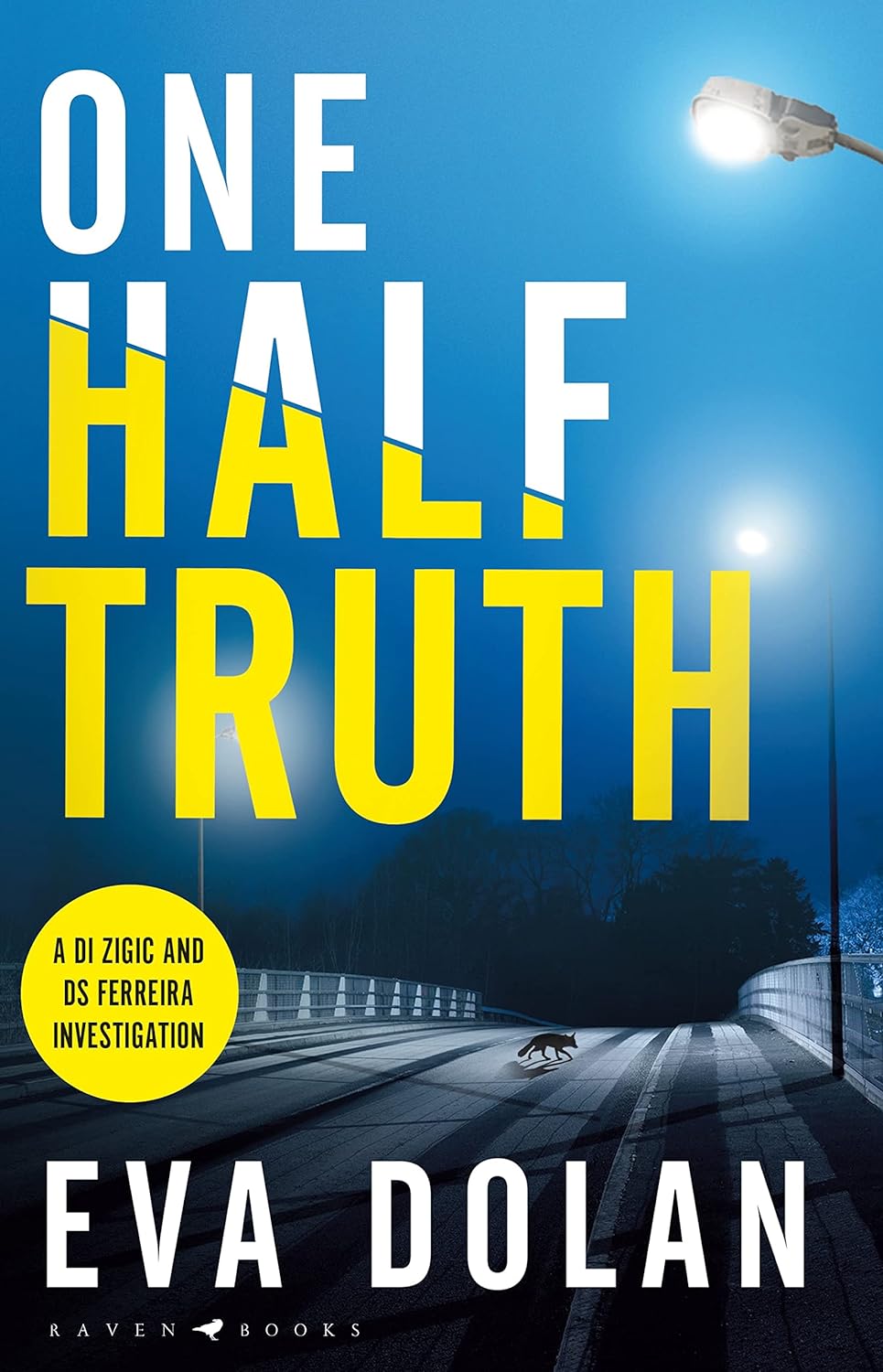 One Half Truth, is the sixth in Eva Dolan’s series of police procedural mysteries featuring Detective Inspector (DI) Zigic and Detective Sergeant (DS) Ferreira novel by Eva Dolan. Set in the British city of Peterborough, which is about 75 miles from London, the book leads off with the shooting death of a young journalist named Jordan Radley. Still a student, Radley was already making a name for himself as a promising investigative reporter. It’s fairly clear, even at the start, this his death was not a random mugging. Someone wanted to silence him. The question is why.
One Half Truth, is the sixth in Eva Dolan’s series of police procedural mysteries featuring Detective Inspector (DI) Zigic and Detective Sergeant (DS) Ferreira novel by Eva Dolan. Set in the British city of Peterborough, which is about 75 miles from London, the book leads off with the shooting death of a young journalist named Jordan Radley. Still a student, Radley was already making a name for himself as a promising investigative reporter. It’s fairly clear, even at the start, this his death was not a random mugging. Someone wanted to silence him. The question is why.
Zigic and Ferreira start to turn over various rocks and a lot of suspicious characters slither out into the light of day. It won’t be easy, though. There isn’t much evidence to go by, and like most journalists, Radley didn’t share what he was working on with anyone.
A parade of red herrings ensues. Perhaps it was a white supremacist group that Radley had annoyed. Perhaps his murder has something to do with exposing mistreatment of the elderly by home care nurses. A contaminated construction site that caused worker injuries and death could be the source of the threat to Radley. Or, maybe Radley’s death had to with his poking into the ostensibly accidently air crash death of a hated local industrialist by men he put out of work when he sold his factory.
Slowly and methodically, Zigic and Ferreira begin to circle around the truth, elusive as it may be. Dolan develops a parallel story amongst the main suspects: a group of middle-aged men who were thrown out of work when the factory closed. These men, all of whom were highly skilled and well paid when they built automated machinery, have had to adapt to low-wage, undignified jobs in the “new” British economy, post Brexit. When the factory closed, they’d been arrested and jailed for harassing their old boss, who later crashed his helicopter. Could it have been more than accident? What had Radley found out?
Dolan certainly keeps you guessing. We get round after round of interrogations with the main suspects, who bumble and deny until they can no longer conceal the truth. It’s gritty. It’s realistic. It’s, to be honest, a little dull.
There’s a fine line between portraying the grinding tedium of police work realistically and actually being tedious. This may not be a fair comment, as I was reading this as an American, so it’s possible I was missing a lot of context and nuance that would make the book more interesting. I found it flat, though, but that’s just me. Also, as an American, I am not familiar with the British police ranks, so I get tripped up by DCI, DCP, DI, etc. Who is who? I can’t tell.
This book falls well into the genre of British police novels, and as such, it features a crew of interminably hung over, miserable cops constantly stewing over their careers and sour resentments in the office. It’s a thing. I’ve seen it in almost every book of this type. I don’t find this fun or interesting. It’s depressing, but then again, I’m a mindless American so I need to be amused by books, not thrown into an emotional tailspin.
Dolan builds empathy for both the cops and the crooks by highlighting the plight of the English in this era. Things are not good, even for people with paying jobs. The economy is not working for most people, and for some, like the underemployed factory workers, it’s a waking nightmare that will not end—while greedy industrialists and corrupt politicians make out like bandits. You feel everyone’s pain, which makes the book compelling, if a tad preachy in places.
I can’t really recommend this book, but if you like British cop thrillers, you might want to check it out.
